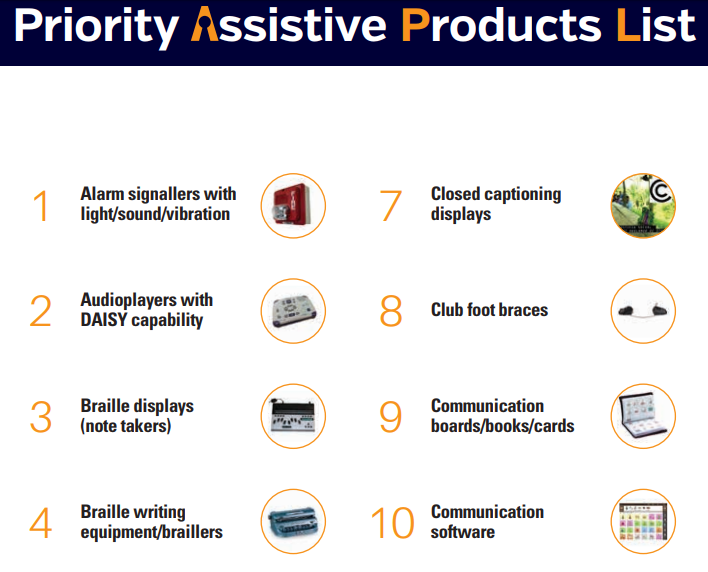“With assessment and appropriate interventions, the use of assistive products can be not only enabling and empowering, but also transformative in facilitating new life skills and opportunities for people with ID.” – Boot, et. al.
Think about what your life would be like if you couldn’t get new glasses when you needed them. Do you use a pillbox to organize your prescriptions? What if you broke your leg? What would you need to be able to get out of the bed or house?
Are there assistive devices that may help your loved one?
What is assistive technology?
Assistive technology (AT) is any item, piece of equipment, software program, or product system that is used to increase, maintain, or improve the functional capabilities of persons with disabilities.
-
-
AT can be low-tech: communication boards made of cardboard or fuzzy felt.
-
AT can be high-tech: special-purpose computers.
-
AT can be hardware: prosthetics, mounting systems, and positioning devices.
-
AT can be computer hardware: special switches, keyboards, and pointing devices.
-
AT can be computer software: screen readers and communication programs.
-
AT can be inclusive or specialized learning materials and curriculum aids.
-
AT can be specialized curricular software.
-
AT can be much more—electronic devices, wheelchairs, walkers, braces, educational software, power lifts, pencil holders, eye-gaze and head trackers, and much more.
-
Assistive Technology Industry Association
“A specific group of people who can benefit from user appropriate assistive technology are people with intellectual disabilities. However, the use of assistive products by people with intellectual disabilities is a neglected area of research and practice, and offers considerable opportunities for the advancement of population health and the realization of basic human rights.” – Boot, et. al.
The World Health Organization has launched the Global Cooperation on Assistive Technology (GATE) with a goal “to improve access to assistive technology as a part of Universal Health Coverage.”
In 2016 they published a list of 50 items that are called the “Priority Priority Assistive Products List” (APL).
“The Priority Assistive Products List encourages countries to develop a list of national priority products, and is a guide to enhance production, procurement and service provision, to develop reimbursement policies and to shape markets. Future work will also relate to standards and procurement for priority assistive products.”
Take a look at the full list and see if there is anything that might help your loved one be more independent or live life more fully.
If you’d like to advocate in this area the WHO might be a good place to start.


